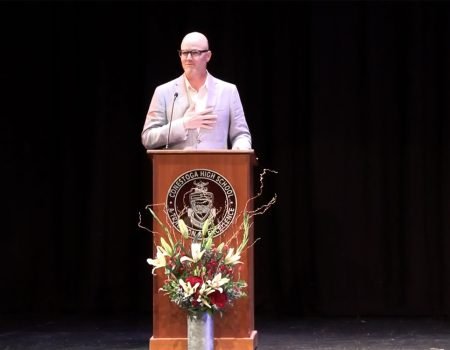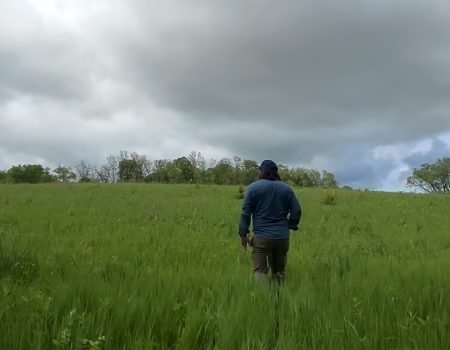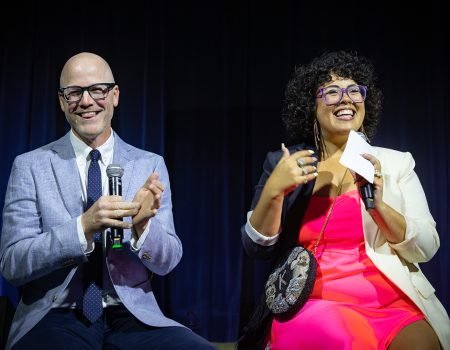The Way We’re Made
Making a great playlist is hard to do.
First, you need to nail the music. Pissed off? Try a little Rage Against The Machine. Confounded? Death Cab For Cutie. Crestfallen? Sprinkle in some Laura Veirs.
Next you need to find the perfect lyric. Intense love might call for Chris Carrabba’s “Hands Down” (“Your kiss might kill me/So won’t you kill me”). Soul crushing heartbreak might find solace in Tyson Ritter’s “Move Along” (“Even when you’re hope is gone/Move along”).
What do you play, then, when you’re on your way to interview the guy who popularized the phrase “Generation X”? The guy who turned a Smith’s song (“Girlfriend In A Coma”) into a 288-page novel about the end of the world? The guy who finds magical reality (plane crashes, Martian abductions, meteorites) by peaking beneath the well-pruned lawns of suburbia? The guy who recently — and emphatically — proclaimed “F**k interviews!”?
I strode through Midtown Manhattan yesterday seeking the perfect soundtrack to a post-modern (he did, after all, write the book, “Life After God”), fully-transparent (he is, in fact, in the business of promoting his first film, “Everything’s Gone Green”) conversation with one of my literary heroes, author, screenwriter, and visual artist Douglas Coupland.
Don’t know him? Fair enough. Consider:
Without Douglas Coupland, there might not be Chuck Klosterman.
Without “Generation X” there might not be “Real World.”
And without Coupland’s “Miss Wyoming,” there might not have been a “Donnie Darko.”
I settle on a three songs set to repeat (its just a few blocks from MTV’s Times Square offices to Coupland’s East Side hotel): Air’s “Lost In Kyoto,” Massive Attack’s “Inertia Creeps,” and Joan Osborne’s “One of Us.” Musically, the songs create a pensive and atmospheric whole. Lyrically, they speak to faith and sex and God in the belly of a black-winged bird — straight up Coupland’s ally.
As I near his hotel, though, my soundtrack and his unique storytelling sensibilities begin to play tricks on me. Suddenly, the streets around me are alive with quirky, symbolic, double-take worthy sightings. First, a woman sprints by wearing one prosthetic leg, and carrying another. Next, I pass a homeless man pushing a cart with a boom box blaring Billy Joel’s “You May Be Right.” Finally, in nearby Madison Square Park, workers are assembling a gigantic public sculplture: Roxy Paine’s four-story stainless steel tree.
Seconds after we settle into conversation, I share all of this with Coupland.
“That’s so weird,” he says. “I’m working on a chrome beaver damn for a park in Vancouver. It’s a parabola, probably eighteen feet across and there’s a slate, flat surface where water is going to come down into an infinity pool.”
Um, weird.
“Yeah,” he says.
Why?
“The neighborhood I grew up in had this fence that surrounds the watershed. And if you go on the other side of that fence, there’s nothing until the North Pole and down to Siberia. It’s the absolute cutoff point between man and nature. I used to think nothing of it. But now I think it’s made me sensitized to places where man and nature just collide sometimes beautifully and sometimes not so.”
And then he pauses, tilts his head, and says, “This is a really weird thing to say to you, and it’s only because the light is really strange behind you, but your ears are really asymmetrical.”
Which is kind of how it goes with Coupland. Within sixty seconds you’re awash in the serendipity, specificity and Big Themes that are the hallmark of his work.
The Canadian author’s genre defining first novel, “Generation X: Tales for an Accelerated Culture,” defined a post-Baby Boom, pre-Millennial aesthetic in a way few other works of art did. The novel’s protagonists, a zany, rootless, product-saturated quartet of post-collegiate friends, were virtual blueprints for the ’90s twentysomething archetype Richard Linklater would later come to call, “slackers.”
Unlike other ’90s artists who inadvertently or otherwise captured a cultural moment and then disappearing (Kurt Cobain, Shannon Hoon, Ben Stiller), though, Coupland has gone on to notable and accomplished second, third, and fourth acts. His sophomore novel, “Microserfs,” captured software cube culture just as Bill Gates became a household name. His most-recent, “Jpod,” captured gaming culture just as consoles began to outpace CD players. As one People Magazine writer snarkily put it, “Coupland is 45 minutes in the future.”
“Everything’s Gone Green,” then, finds the author in familiar territory. Twentysomething Ryan (“Road Trip” co-star Paulo Costanzo) — he of the perpetual five o’clock shadow — wakes up to find that he has been dumped by his overly-ambitious girlfriend, fired from his dead end job, and eventually and inadvertently embroiled in a money laundering racket for Japanese gangsters. Hilarity — and the kind of minor epiphanies that only long drives through untouched stands of Pacific Northwest evergreen forests can inspire — ensues.
And just as Coupland describes his own experiences at the intersection of civilization and nature, Ryan too is on the edge of something far greater than himself.
“The film takes place in Vancouver,” Coupland says, “where so many of the forces defining the new century are playing themselves out at full volume. Nobody makes anything. I call it pushing electrons around with a stick. We make video games. We flip real estate. And Ryan is a twenty-nine-year-old who is a very 20th century person who hasn’t figured out that everyone else is in the new century.”
Moreover, like most of the characters in Coupland’s oeuvre (and Jim Stark, Holden Caulfield, Lelaina Pierce before him), Ryan is teetering precariously on the edge of (prolonged) adolescence and newfangled adulthood.
“Whatever happened to just being real?” he asks. “Why aren’t we just… content?”
Whether driven by the overwhelmingly symbolic image of a massive whale washed up on a city beach (something Coupland says he pulled straight from his own experiences), or a subtle nudge from a love interest (in Ryan’s case, Jet Li’s forthcoming “War” co-star Steph Song), those inevitable collisions — civilization and nature, past and future, adolescence and adulthood — eventually subside.
“It never really ends though,” Coupland says. “You just get used to it.”
He pauses, absent-mindedly arranges his wallet, sunglasses, and pen in a straight line on the table between us, and then continues.
“That may sound depressing, but its not. It’s the way we’re made.”



